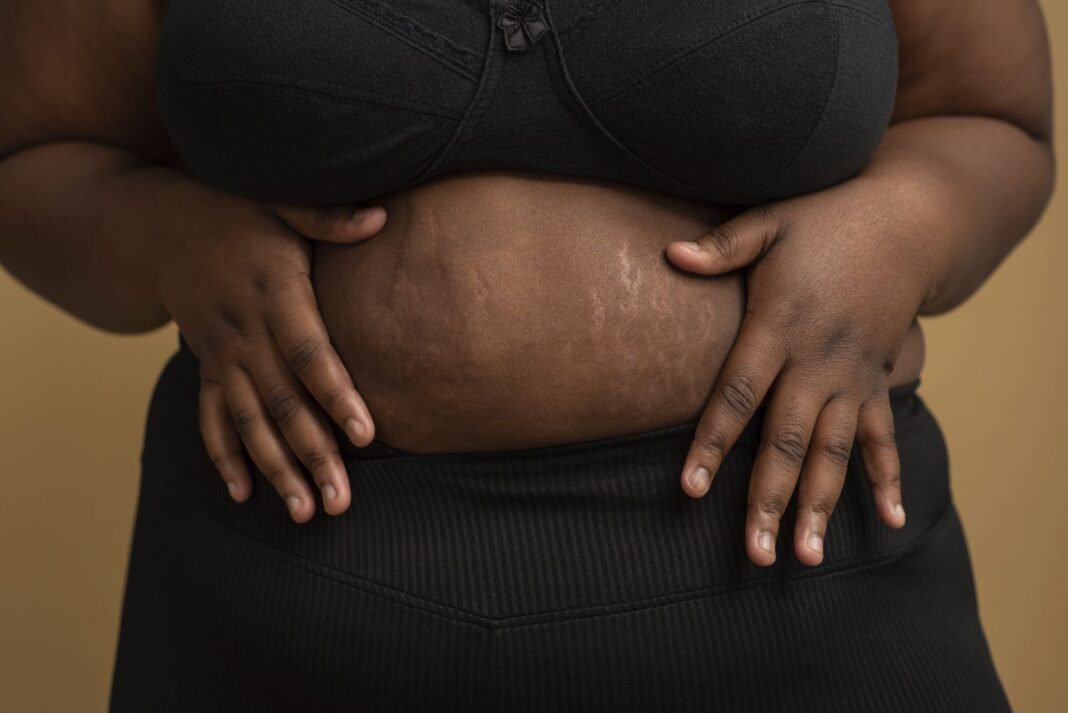Treatment Options for Stretch Marks
Natural Remedies for Stretch Marks
There’s no miracle cure for stretch marks. However, some potential natural remedies may help even out skin tone and make stretch marks less noticeable, especially if treated soon after they’ve developed.
For example, a 2021 study evaluated the use of an oil made with vitamins A and E, as well as calendula, lavender, rosemary, chamomile mixed with the synthetic PurCellin oil. Results showed that when the 50 study participants used it twice a day for four months, the mixture was safe and effective.
It’s less clear whether individual ingredients offer benefits. For example, studies suggest that vitamin E, as well as massages of almond oil, cocoa butter, or olive oil alone, offer no benefit when applied to stretch marks.
Vitamin A
Vitamin A (retinol) may improve stretch marks if used in their early (or inflammatory) phase. It works by helping speed up skin cell turnover and collagen production.
While vitamin A is naturally found in foods, it’s also available in over-the-counter (OTC) topical products for stretch mark purposes. Experts recommend a product that combines vitamin C and alpha hydroxy acid (AHA). People who are pregnant should not use retinol.
Vitamin C
Vitamin C is known for its role in collagen development, and is one of the most promising options in helping to treat stretch marks. Found in fruits and vegetables, vitamin C in an over-the-counter or prescription product applied to skin may be combined with alpha-hydroxy acids like glycolic and lactic acids.
Hyaluronic Acid
Research has suggested that products with hyaluronic acid might help prevent the formation of stretch marks. This compound is found naturally in the skin, connective tissue, joints, and eyes.
Hyaluronic acid can be used to treat stretch marks. It also may be used before another therapy, such as lasers or a peel, as part of preparation for continued treatment.
Centella
An herb known as gotu kola (Gotu kola) may also help prevent stretch marks. While more research is needed, experts say this ingredient may be worth trying with hyaluronic acid.
Sugar
While research is limited around sugar as a stretch mark remedy, this ingredient can be used as a natural exfoliator. It may work similarly to microdermabrasion, a medical procedure that exfoliates the skin and potentially treats stretch marks.
Sugar’s tiny crystals can help gently remove dead skin cells, revealing a smoother complexion. Some dermatology providers suggest it can help to improve blood flow and healing.
Aloe Vera
Aloe vera is known for its soothing and moisturizing properties, which may help reduce the appearance of stretch marks.
Medical Treatments for Stretch Marks
Radiofrequency Therapy
Radiofrequency is a procedure that uses a device beaming electric currents to heat up the tissue beneath the skin. This prompts the development of collagen and eventual skin renewal.
One study found that a series of radiofrequency treatments visibly reduced the size and appearance of stretch marks, but more long-term research is needed.
Chemical Peel
A chemical peel is a treatment that safely uses chemical acids to exfoliate the top layer of skin. This tactic may help various skin issues, including fine lines, acne, uneven skin tone, and sometimes stretch marks.
Specifically, the trichloroacetic acid (TCA) peel may be combined with another treatment option like microdermabrasion to promote new, visibly renewed skin in stretch mark areas.
Tretinoin
Studies show that topical prescription retinol, known as tretinoin, can fade newer stretch marks and make them less noticeable. To get the best results, it’s recommended to apply the cream every night for several months.
Who Gets Stretch Marks, and Why?
Anyone can get stretch marks, but some people may be more likely to develop them. Because they are a result of rapid skin stretching, this can happen during:
- Puberty
- Rapid weight gain or loss
- Pregnancy
- Certain health conditions like Cushing’s syndrome and Ehlers-Danlos syndrome
In addition, data suggest that females are more likely to get stretch marks on the breasts, while males may more often experience stretch marks in areas like the lower back or upper arms.
What’s the Outlook?
Stretch marks won’t disappear completely, but they may fade in appearance. A healthcare provider can advise which treatment (or combination of treatments) would be best for your skin based on factors like age, health status, and how long the stretch marks have been present. Research shows that most stretch mark treatments are more effective when used early in development.
Keep in mind that there are no one-size-fits-all treatments. What works for one person may differ from your most effective treatment.
Summary
Stretch marks are discolored skin lines or stripes that commonly develop as the skin stretches during rapid weight gain. While there’s no cure for stretch marks, some may fade over time.
Various natural and medical treatment options are available to help lessen their appearance. Research suggests that prescription retinol tretinoin, radiofrequency, and laser treatments may be among the most effective treatments. A healthcare provider can help determine which therapies are suitable for you.





